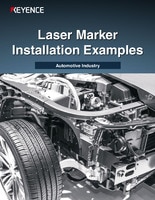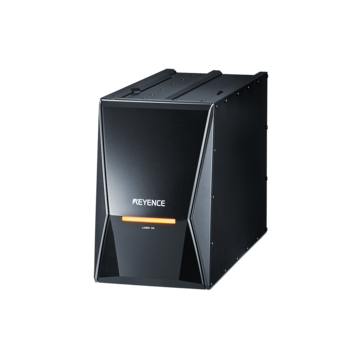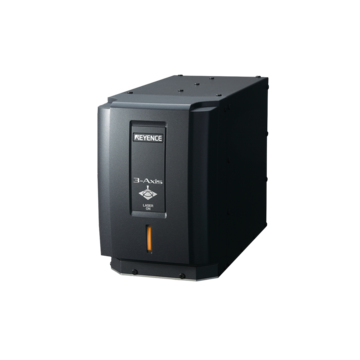Industrial Laser Marking Systems / Laser Markers
The Laser Engraving Process: How Does a Laser Engraver Work?
-
Tags:
- Laser Engraving , Laser Marking , Laser Etching
When you think of engraving, what comes to mind? For many, the image is a person using a handheld device to carve out a design. However, this manual version is outdated—the new aged version of engraving with a laser engraving machine is here to stay.
Laser engraving is the automated version of the standard handheld engraving method. Instead of steady hands and long man hours, laser engraving can be achieved in minutes (or even seconds), lasts a lifetime, and does not depend on the penmanship of the user.
Used across industries for traceability, aesthetics, and identification, a laser engraving machine is a vital tool that conquers labeling, print marking, and manual engraving. In this blog, we’ll discuss how a laser engraver works, who is using it, how to use a laser engraver, and where laser etching falls into the mix.
Principles of Laser Engraving
Taking a deep dive into how laser engraving works can get technical, but the core principles are simple to understand. Laser engraving is the process of cutting marks into metal, wood, or plastic by removing material through vaporization. The tool for laser engraving is called a laser marking machine (also known as a laser engraving machine)—a versatile appliance that can perform various laser functions. For laser engraving specifically, the laser engraving machine shoots out a laser beam onto a target and then "digs" into the material through vaporization. This process leaves behind a clean, permanent, and precise mark.
Most of the variation comes from the type of laser medium being used, some of which can be found in the list below:
- Fiber lasers
- CO2 laser
- Hybrid lasers
- UV lasers
Each delivers its own unique qualities and output to support a long list of manufacturing and production needs. Most people check out the technology due to its capabilities with so many different types of materials. When you consider how much more effective and easier it is to use compared to manual machinery, its rise in popularity is no wonder.
Impressive energy conversion, a non-contact approach, automation, and quality are just a few of the core principles that govern each action of the laser engraving process. Of course, this is only possible through the innovation and capabilities surrounding the design of the engraving technology.



We’re here to provide you with more details.
Reach out today!

Core Components of a Laser Engraver
While each type of laser engraver has unique design aspects and components, some core components remain the same. For example, the laser source, optic system, and control system are some of the most important components of any design. There’s no point in getting stuck on laser etching vs. engraving, as the technology as a whole can adapt to many production needs.
Other notable features of its design include adjustments to laser focus and intensity and user-friendly interfaces with a minimal learning curve. Part of what makes the technology’s design so popular is that it can be easily integrated with already existing manufacturing processes. This allows you to keep up with the tasks at hand while slowly replacing old technology with the new.
Although there’s a minimal learning curve involved, that doesn’t mean the engraving process is always copy and paste from one part to the next. It’s important to understand the start to finish so you know how to work it into the needs behind ongoing production requirements.
Curious about our pricing?
Click here to find out more.

The Laser Engraving Process
Learning about the ins and outs of a laser engraver is crucial if you plan on integrating it into your production processes. How does laser engraving work exactly? In addition to what has already been mentioned, ensuring the workspace is clean and clear of debris is essential. The laser is then focused on the desired material, generating heat. This high heat, in combination with multiple repetitions, can create more depth to the engraving as it vaporizes the material away.
Digital designs guide the laser engraving software. This level of control and precision guarantees consistent results with every part. However, it is vital that each part is correctly positioned on the machine. It doesn’t matter if you need a laser engraver for metal, softwood, or plastics—proper positioning is a must.
Once it is time to let the laser work, you’d be surprised at how efficiently it completes the task. The process ensures reduced downtime, less physical labor, and more efficiency in production from start to finish.
We’re here to provide you with more details.
Reach out today!

Top Industries That Use Laser Engraving
Laser engraving is versatile across a range of industries, such as:
- Automotive industry
- Medical industry
- Electric / semiconductor industry
- Electric vehicle industry
- Pharmaceutical industry
- Jewelry industry
- Apparel industry
Different Applications for Laser Engraving
Traceability
The most common use for a laser engraving machine is traceability. Traceability is the ability to mark products with unique identifiers that can be tracked throughout the manufacturing process. It is used in almost all industries, but some industries have certain specifications for traceability that make engraving an optimal choice.
- Medical Device Traceability
- In the medical supply industry, strict traceability standards require almost all medical devices to have 2D code unique device indicators, also known as UDIs. UDIs are required to be readable by machines and humans, permanent, and store crucial supply chain information inside the 2D code. These codes are vital in tracking a device’s life cycle, ensuring compliance with FDA regulations, preventing counterfeiting, and guaranteeing patient safety.
Medical devices are often made of stainless steel and coated with an anti-corrosion seal. Moreover, medical devices are frequently exposed to bodily fluids and constantly sanitized. Although these practices protect the integrity of a device and protect patients, it makes it difficult for ink or labeling methods to stay both permanent and visible. However, laser engraving gives a solution that withstands the seal and contaminants to keep the UDI permanently visible.
Difficult to Mark Materials: Glass, Rubber, Plastic, Paper
Each of these materials poses unique challenges for marking conventional marking technologies. However, laser engraving can overcome each by providing an efficient process.
- Glass
- Glass is marked for various reasons—from decorative glassware to automotive windows, but manufacturers consistently face challenges with engraving. Engraving glass without a laser requires a steady hand for a manual engraver, intense focus, and lots of man hours. Not only that, but glass is extremely fragile and can break with the wrong amount of pressure applied.
Using a laser engraving machine for glass engraving takes a significant amount of stress off of manufacturers. Not only does it take a fraction of the time, but a laser engraving machine can be programmed to put the appropriate amount of power onto the glass, ensuring no weak points are created. This type of control allows for precision engraving that doesn’t harm the rest of the material. - Rubber
- Rubber is also a difficult material to work with because of its flexible shapes and exposure to environmental conditions. Rubber is used for wiper blades, tires, hoses, and more, all products that are odd-shaped parts. Laser engraving with a 3-Axis laser engraving machine, such as those in KEYENCE’s laser lineup, allows you to engrave distortion-free on these odd shapes. Additionally, rubber products often come in contact with environmental conditions that wear down typical markings from ink or paper labels. Using laser engraving for rubber ensures that any necessary marking will stay intact, no matter the contamination.
- Plastic
- Plastic is another flexible material that is exposed to contaminants and difficult to mark because of its susceptibility to overheating and deforming. Using a laser engraving machine to engrave prevents deformities by allowing the user to easily control the intensity applied to the material.
Discover more about this product.
Click here to book your demo.

When to Use Laser Engraving Versus Laser Etching
The terms laser engraving and laser etching are commonly interchanged and meant to accomplish the same purpose. In general, laser etching is more of a surface-level interaction between the laser and workpiece that is not intended to create a great deal of depth, but rather provide some contrast for visibility. Laser engraving, on the other hand, is more intentional about removing material to create a deep mark that can withstand harsh conditions that other marking styles may wear off in.
You may choose laser engraving over laser etching for a few reasons. One reason may be pure aesthetics and industry regulatory standards (i.e., medical devices). Another possibility is the material you are working with lends itself better to one style over the other.
Ready to Add Laser Engraving to Your Toolbox?
Have a project in mind and need assistance? KEYENCE offers five different laser marking machines that have engraving specialties for your manufacturing process. With a 3-Axis and autofocus lens, KEYENCE's laser engraving machines outperform competitors with distortion-free marking on all shapes and sizes. KEYENCE works with technicians from all industries to find the best engraving machine based on manufacturing goals and project type.
Want to learn more about how to use a laser engraver and see our machines in person? Contact us today to request a free demo! At KEYENCE, we have a knowledgeable team that will help you throughout your selection process to operations with on-site operating instructions, along with industry-leading after-sales support.
We’re here to provide you with more details.
Reach out today!






